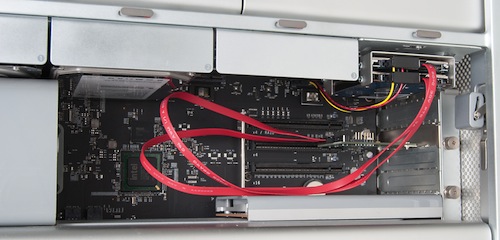

Integrated Intel HD chip and dedicated nVidia card with Optimus Core i3 LV (or ULV) with Core i5/i7 LV/ULV option (add thickness if necessary)

But each one of those four devices has at least 16GB of NAND, spread across multiple planes and die. Typically that would mean some very low transfer speeds, particularly on writes. The SSD only has four NAND devices on it. Even the new MacBook Airs don’t ship with a version of OS X with TRIM support. This is very important because although OS X 10.6.4 has a field for reporting TRIM support on an SSD, the instruction isn’t actually supported by the OS. Its performance hardly dropped as a result of normal desktop use.
2010 MAC PRO SSD SERIES
I reviewed the latter not too long ago and found that it was a good drive for the money, and here’s the kicker: the SSDNow V Series Boot Drive was amazingly resilient when written to without TRIM support. It’s the same controller that’s in Kingston’s SSDNow V+ Series and the SSDNow V Series Boot Drive. The part number on the Toshiba controller may look familiar to some of you. Just as SSDs will break the traditional SATA interface barriers, we’ll see the same happen to form factors as well. There’s nothing particularly innovative about the form factor of the SSD, other than Apple did away with the unnecessary space a 2.5” SSD would require. Presumably 3rd party SSD manufacturers (ahem, SandForce partners I’m looking at you) could produce drop in replacements for the MacBook Air SSD. The SSD isn’t in an industry standard form factor, although the connector appears to be either micro or mini SATA. The 11-inch MacBook Air SSD, courtesy of iFixit iFixit already confirmed Toshiba is in the new MacBook Air with its teardown: Again, nothing can trump Apple's tight integration between hardware and software.Īpple likes to work with two different controller manufacturers for SSDs: Samsung and Toshiba.

The new Airs both go to sleep and wake up from sleep quicker than any of the other Macs, including my upgraded 15-inch Core i7 MacBook Pro. I’d be willing to bet the SSD in the MacBook Air has tight integration with OS X to guarantee quicker than normal boot times.Ĭlearly the new Air isn't instant on from a boot standpoint, but it's pretty much there from a recover-from-sleep standpoint. Apple does customize the firmware on its SSDs. You'll notice that even the SF-1200 SSD in my 15-inch MacBook Pro takes longer to boot than these new Airs. It’s even a shorter boot than my MacBook Pro with a SandForce SF-1200 based SSD in it: System Performance Comparison That time is significantly reduced compared to the old MacBook Air and any other Mac with a conventional hard drive. From a completely powered off state the MacBook Air still takes time to boot. Apple advertises the new MacBook Air as being instant on as a result of the internal SSD.


 0 kommentar(er)
0 kommentar(er)
